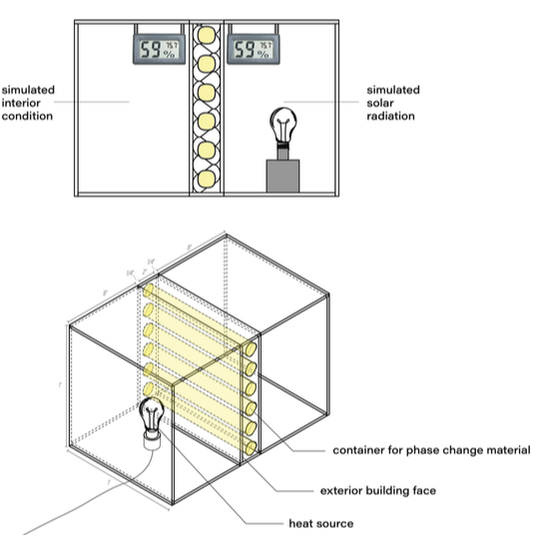1. Abstract
Thermal control of interior spaces is largely regulated by mechanical ventilation systems, which contribute to the built environment's enormous share of carbon emissions. Especially in regions where temperatures swing drastically from day to night, peak loads strain grid infrastructure and produce untenable energy costs. Alternative strategies to mitigate energy demand for heating or cooling utilize inherent characteristics of the natural environment. Many such tactics employ material properties in order to achieve thermal comfort without carbon intensive energy consumption. The thermal performance of phase change materials (PCMs) to store energy in the form of latent heat, provokes the exploration of related strategies in building application simulations.
2. Research Question
What is the latent heat storage and release potential of non-toxic, accessible phase change materials?
3. Proposal
We will conduct a series of tests to measure the capacities of coconut oil to store and release latent heat. The scope of the study may cover also the energy released during phase change transition, as this provides a direct connection to material performance in the built environment.
Objectives of Test
1. Simulate daytime heat gains.
2. Record pre/post heat gain temps of the selected phase change materials.
3. Record air temperature as affected by the heat fusion process.
Objectives of Test
1. Simulate daytime heat gains.
2. Record pre/post heat gain temps of the selected phase change materials.
3. Record air temperature as affected by the heat fusion process.
4. Hypothesis
By inserting coconut oil into the testing box, we predict that the air temperature will heat up more slowly than if no material was inserted, and likewise we predict that cooling after the bulb is turned off will happen slower as the PCM resolidifies.
5. Mockup
|
Below are diagrams of initial mockup assembly. Development and refinement to this design is seen in subsequent steps of the project.
|
|
